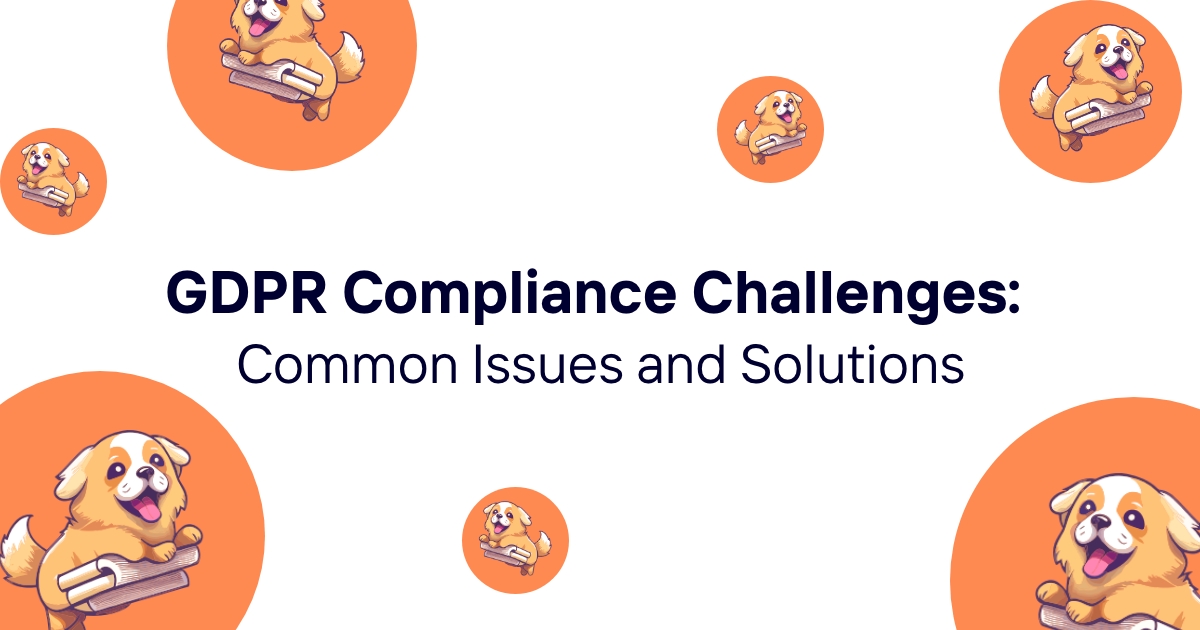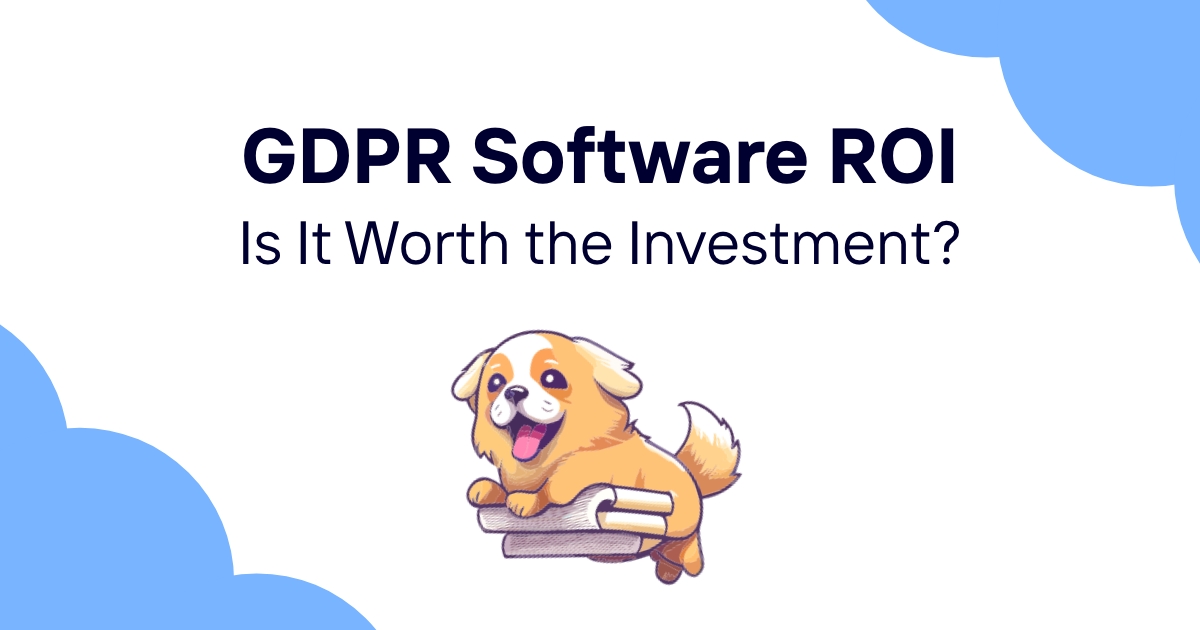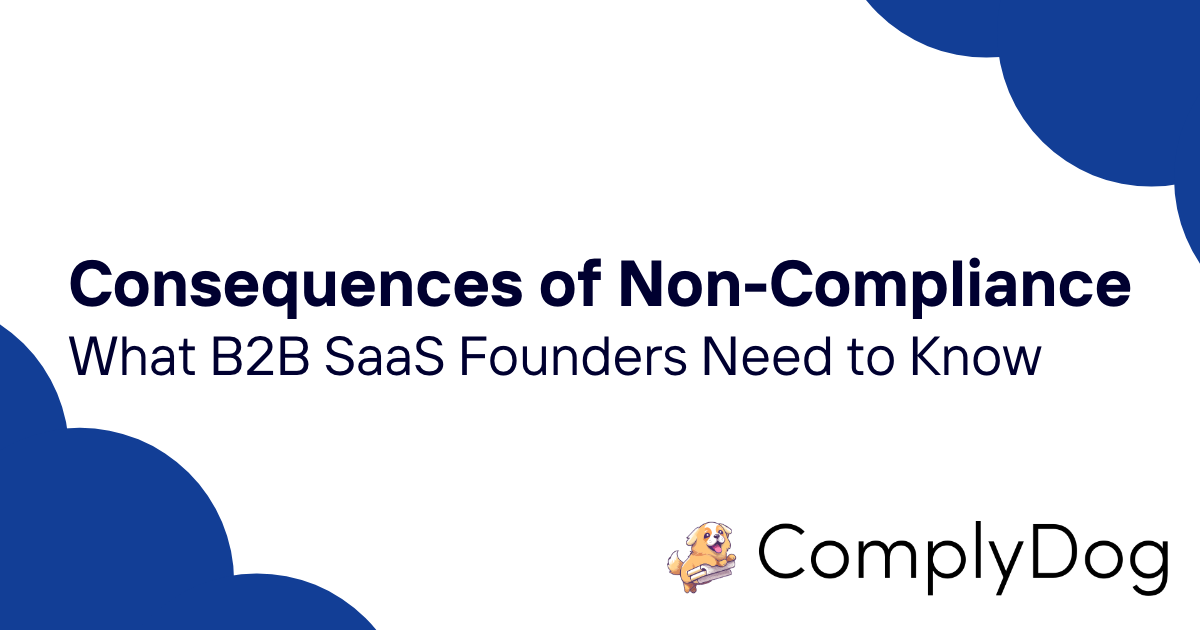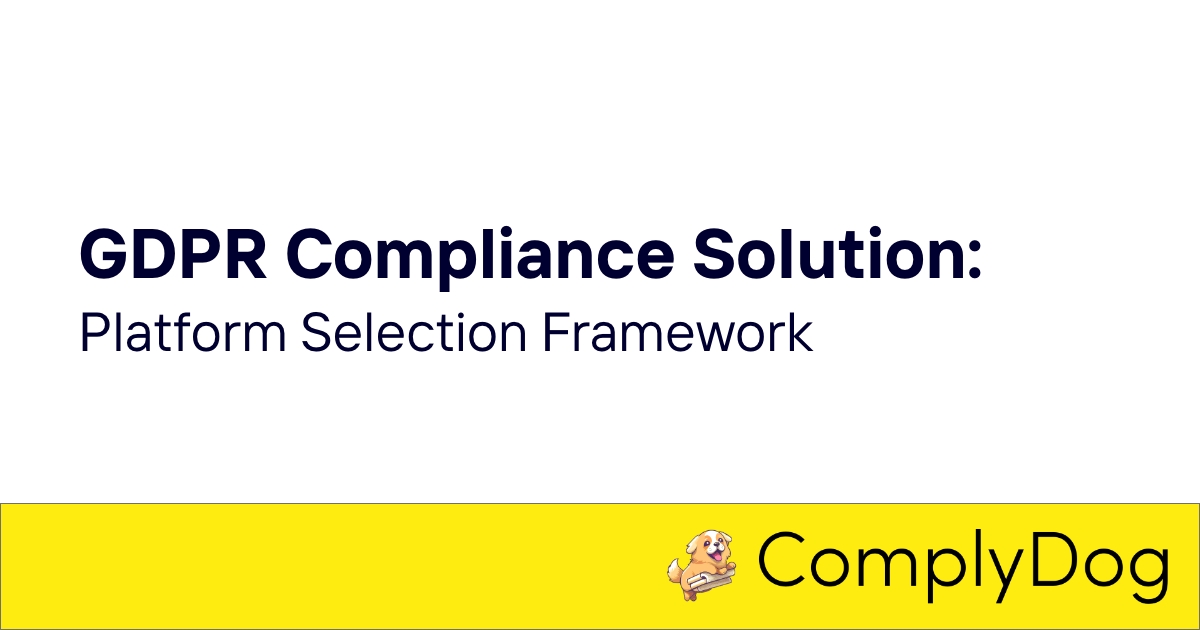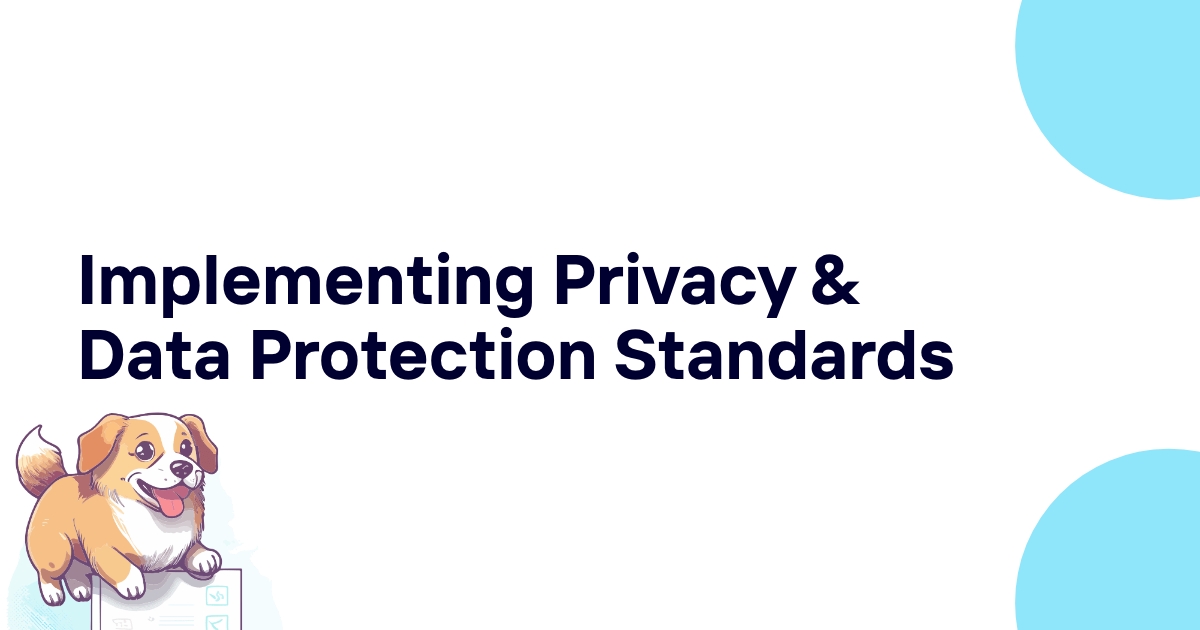GDPR compliance implementation reveals complex challenges that organizations rarely anticipate during initial planning phases. What appears straightforward in regulatory guidance becomes complicated when applied to real business operations with legacy systems, multiple vendors, and diverse stakeholder needs.
Most organizations encounter similar obstacles regardless of size or industry, yet many struggle unnecessarily by treating these challenges as unique problems rather than common implementation issues with proven solutions.
This guide identifies the most frequent GDPR compliance challenges while providing practical solutions that help organizations overcome implementation obstacles and achieve effective privacy protection.
Most Common GDPR Compliance Challenges
Complexity and Scope Underestimation
Organizations typically underestimate GDPR compliance scope by 50-70%, discovering additional requirements as implementation progresses through different business functions.
Cross-functional impact extends beyond IT and legal teams to affect marketing, sales, HR, customer service, and operations in ways that weren't initially apparent.
Legacy system integration proves more complex than anticipated when privacy controls must work with older technology that wasn't designed for modern privacy requirements.
Vendor ecosystem complexity multiplies when organizations discover they have 3-5 times more third-party data processing relationships than initially documented.
Resource Allocation Difficulties
Budget overruns occur in 60-80% of GDPR implementations as organizations discover hidden costs and more complex requirements than originally planned.
Skilled personnel shortage affects most organizations as demand for privacy expertise exceeds available talent in the market.
Time constraints create pressure for rushed implementation that may compromise compliance quality or create gaps requiring later remediation.
Competing priorities force organizations to balance privacy implementation with other business initiatives and operational requirements.
Stakeholder Alignment Issues
Executive buy-in challenges emerge when privacy investments compete with revenue-generating initiatives for resources and attention.
Business unit resistance occurs when privacy requirements are perceived as obstacles to operational efficiency or business development.
Customer communication difficulties arise when organizations struggle to explain privacy changes without creating confusion or concern.
Vendor cooperation problems develop when third parties lack privacy maturity or resist implementing required privacy controls.
Technical Implementation Complexity
System integration challenges multiply when privacy tools must work with diverse technology environments and legacy applications.
Performance impact concerns arise when privacy controls affect system speed or user experience in customer-facing applications.
Data flow mapping proves more complex than anticipated when organizations discover hidden data movements and processing activities.
Automation implementation requires more technical expertise than expected when configuring privacy tools for specific business requirements.
Data Discovery and Mapping Difficulties
Hidden Data Repositories
Shadow IT systems containing personal data often escape initial discovery efforts, creating compliance gaps and ongoing risk exposure.
Legacy database identification requires extensive technical investigation when documentation is incomplete or outdated.
Backup and archive system data discovery proves challenging when older systems use different data structures or storage formats.
Cloud service data location uncertainty emerges when organizations lack visibility into where cloud providers actually store and process data.
Complex Data Flows
Cross-system data movement tracking becomes complicated when data flows through multiple applications and transformations.
Real-time data synchronization creates challenges when data changes rapidly across integrated systems with different update frequencies.
API integration complexity multiplies when organizations use numerous third-party services that exchange data in different formats.
Data transformation processes may obscure original data sources making it difficult to track data lineage and processing purposes.
Documentation Challenges
Technical documentation gaps leave organizations uncertain about data processing activities and protection measures.
Business process mapping requires extensive stakeholder interviews when formal documentation doesn't exist or is outdated.
Change tracking becomes difficult when organizations lack systems for documenting data flow modifications over time.
Accuracy verification requires ongoing effort when data discovery tools produce false positives or miss important data repositories.
Discovery Tool Limitations
Automated scanning limitations mean tools may miss personal data in unstructured formats or unusual storage locations.
False positive management requires significant manual effort to verify automated discovery results and remove incorrect classifications.
Coverage gaps occur when discovery tools can't access certain systems or require extensive configuration for comprehensive scanning.
Cost-benefit analysis becomes complex when organizations must balance discovery tool investment with manual discovery effort requirements.
Consent Management Complexities
Multi-Channel Coordination
Website consent management must coordinate with mobile apps, email marketing, and offline interactions for comprehensive coverage.
Cross-platform synchronization proves challenging when consent collected on one channel must be respected across all customer touchpoints.
Third-party integration requires consent sharing with vendors while maintaining control and visibility over consent status.
Historical consent validation becomes problematic when organizations must assess whether pre-GDPR consent meets current standards.
Technical Implementation Issues
Real-time consent enforcement requires technical architecture that can immediately respond to consent changes across all systems.
Performance optimization becomes necessary when consent checking creates latency in customer-facing applications.
Database design complexity increases when consent records must capture granular preferences with full audit trails.
Integration testing proves extensive when consent management must work correctly across diverse technology environments.
User Experience Challenges
Consent fatigue occurs when users face frequent consent requests that may reduce completion rates and create negative experiences.
Mobile optimization requires consent interfaces that work effectively on small screens without compromising information quality.
Clarity requirements demand simple language that typical users understand while meeting legal disclosure obligations.
Withdrawal mechanism design must be easily accessible without creating barriers that discourage legitimate consent management.
Compliance Verification
Consent quality assessment requires ongoing evaluation of whether collected consent meets GDPR validity requirements.
Audit trail maintenance demands comprehensive documentation of consent interactions for potential regulatory review.
Legal basis coordination becomes complex when some processing relies on consent while other activities use different legal bases.
Renewal procedures require systematic processes for refreshing consent when appropriate while avoiding unnecessary user burden.
Technical Implementation Obstacles
Legacy System Integration
Older systems often lack APIs or integration capabilities needed for modern privacy control implementation.
Database modification requirements may be extensive when legacy systems need privacy controls that weren't part of original design.
Performance constraints in older systems may prevent implementation of privacy controls without significant infrastructure upgrades.
Security vulnerabilities in legacy systems may create privacy risks that require expensive remediation or system replacement.
Privacy Tool Configuration
Complex configuration requirements often exceed internal technical capabilities requiring external expertise or extensive training.
Customization needs emerge when standard privacy tools don't address specific business requirements or industry needs.
Integration challenges multiply when privacy tools must work with diverse business applications and data sources.
Vendor support limitations may leave organizations struggling with technical issues without adequate assistance.
Automation Implementation
Workflow automation requires extensive business process analysis to ensure automated privacy controls work correctly.
Error handling becomes critical when automated systems must manage privacy exceptions and edge cases appropriately.
Testing complexity increases when automated privacy controls must be verified across multiple scenarios and business conditions.
Maintenance requirements often exceed expectations when automated systems need ongoing monitoring and optimization.
Performance and Scalability
System performance impact from privacy controls may require infrastructure upgrades or architecture modifications.
Scalability planning becomes necessary when privacy systems must handle growing data volumes and user populations.
Monitoring overhead from privacy controls may affect system resources requiring optimization or capacity planning.
User experience preservation requires careful implementation to ensure privacy controls don't degrade application performance.
Organizational Change Resistance
Cultural Transformation Challenges
Privacy awareness gaps exist when staff don't understand why privacy protection matters beyond regulatory compliance.
Behavioral change resistance occurs when privacy requirements conflict with established work practices and efficiency goals.
Priority conflicts emerge when privacy initiatives compete with operational objectives and performance metrics.
Communication difficulties arise when privacy concepts are complex and staff lack context for understanding requirements.
Business Process Adaptation
Workflow modification requirements may be extensive when privacy compliance requires significant process changes.
Efficiency concerns develop when privacy procedures are perceived as slowing down business operations or customer service.
Training burden increases when staff must learn new procedures while maintaining current productivity levels.
Quality assurance needs expand when organizations must verify that privacy procedures are followed consistently.
Management Support Issues
Resource allocation conflicts occur when privacy requirements compete with other business priorities for budget and staff time.
ROI demonstration challenges make it difficult to justify privacy investments that don't directly generate revenue.
Timeline pressure creates tension when management expects rapid implementation while comprehensive privacy programs require time.
Accountability assignment becomes complex when privacy responsibilities span multiple departments and management levels.
Employee Engagement Problems
Job role clarity issues emerge when privacy responsibilities are added to existing positions without clear definition.
Motivation challenges occur when staff don't see personal benefits from privacy compliance implementation.
Skills gap problems develop when existing staff lack privacy expertise needed for effective implementation.
Consider how organizational challenges relate to systematic implementation planning and change management strategies.
Resource and Budget Constraints
Financial Planning Difficulties
Cost estimation challenges occur when organizations lack experience with privacy implementation requirements and vendor pricing.
Hidden cost discovery happens throughout implementation as additional requirements and complexity become apparent.
Budget approval delays may slow implementation when organizations must secure additional funding for comprehensive compliance.
Cost-benefit justification becomes difficult when privacy benefits are intangible and costs are immediate and substantial.
Staffing and Expertise Gaps
Privacy specialist shortage affects most organizations as demand exceeds available qualified personnel in the job market.
Internal capability building requires significant training investment when organizations develop privacy expertise internally.
Consultant dependency creates ongoing costs when organizations lack internal capabilities for privacy program management.
Cross-training needs expand when privacy responsibilities must be distributed across existing staff members.
Technology Investment Challenges
Tool selection complexity increases when organizations must evaluate numerous privacy vendors with different capabilities and pricing.
Implementation service costs often exceed software licensing fees when organizations need extensive customization and integration.
Ongoing maintenance expenses include not just technology costs but also staff time for system administration and optimization.
Upgrade planning becomes necessary when privacy tools require regular updates to maintain effectiveness and regulatory compliance.
Resource Optimization Strategies
Phased implementation enables spreading costs over time while achieving incremental compliance progress and demonstrating value.
Shared services opportunities may reduce costs when multiple business units can use common privacy infrastructure and procedures.
Vendor consolidation can reduce licensing costs while simplifying management through integrated privacy platforms.
Outsourcing consideration may provide cost-effective expertise for specific privacy functions while building internal capabilities.
Third-Party Integration Challenges
Vendor Assessment Complexity
Due diligence requirements expand significantly when organizations must evaluate privacy capabilities of numerous third-party providers.
Capability verification becomes challenging when vendors make privacy claims that are difficult to validate without extensive investigation.
Contractual negotiation complexity increases when privacy requirements must be integrated into diverse vendor relationships.
Ongoing monitoring needs create administrative burden when organizations must track privacy compliance across multiple vendor relationships.
Data Processing Agreement Issues
Template limitation problems occur when standard vendor agreements don't address specific privacy requirements or business needs.
Negotiation difficulties arise when vendors resist privacy terms that conflict with standard business practices or pricing models.
Liability allocation becomes complex when shared responsibility for privacy compliance must be clearly defined and enforceable.
Update management requires ongoing effort when privacy requirements change and vendor agreements need modification.
Integration Technical Challenges
API security requirements may exceed standard vendor capabilities requiring additional protection measures or custom development.
Data format compatibility issues can create integration problems when vendors use different data structures or protocols.
Synchronization complexity increases when real-time privacy control coordination is needed across multiple vendor systems.
Performance optimization becomes necessary when vendor integrations affect system speed or user experience.
Compliance Coordination
Responsibility clarity issues emerge when multiple vendors share data processing responsibilities requiring coordination.
Audit coordination becomes complex when privacy compliance verification spans multiple vendor relationships.
Incident response planning must address scenarios where privacy incidents involve multiple vendors requiring coordinated response.
Regulatory reporting may require cooperation from vendors when authorities request information about data processing activities.
Proven Solutions and Best Practices
Strategic Planning Solutions
Comprehensive scope assessment at project initiation helps organizations understand full implementation requirements and plan accordingly.
Executive sponsorship secured early in implementation provides necessary authority and resources for successful privacy program development.
Phased implementation approach spreads costs and complexity while enabling learning and adjustment throughout the process.
Cross-functional project teams ensure privacy requirements are understood and implemented consistently across all affected business areas.
Technical Implementation Best Practices
Proof of concept testing validates privacy solutions before full implementation reducing risk of expensive mistakes or incompatible solutions.
Integration planning addresses technical requirements early in implementation preventing costly rework and integration problems.
Performance testing ensures privacy controls don't negatively impact business operations or customer experience.
Documentation standards maintain comprehensive records of technical implementations supporting ongoing maintenance and compliance verification.
Change Management Strategies
Communication programs build understanding and support for privacy initiatives while addressing concerns and resistance.
Training programs provide practical guidance for implementing privacy requirements while building organizational capabilities.
Incentive alignment ensures privacy compliance supports rather than conflicts with business objectives and performance metrics.
Success celebration recognizes privacy implementation achievements while building momentum for continued improvement.
Resource Optimization Approaches
Vendor evaluation frameworks streamline selection processes while ensuring comprehensive assessment of privacy capabilities and costs.
Shared resource strategies reduce costs through common infrastructure and coordinated implementation across business units.
Expertise development programs build internal capabilities while reducing dependency on external consultants and service providers.
Continuous improvement processes identify optimization opportunities while enhancing privacy program effectiveness and efficiency.
GDPR compliance challenges are common across organizations but manageable through proven solutions and strategic approaches. Organizations that anticipate and plan for typical implementation obstacles typically achieve better compliance outcomes with more efficient resource utilization.
Effective challenge management transforms potential implementation failures into learning opportunities that strengthen privacy programs and build organizational capabilities for ongoing compliance success.
Ready to overcome GDPR compliance challenges with proven solutions and expert guidance? Use ComplyDog and access implementation support, best practice guidance, and problem-solving resources that help organizations successfully navigate privacy compliance obstacles and achieve comprehensive protection.
